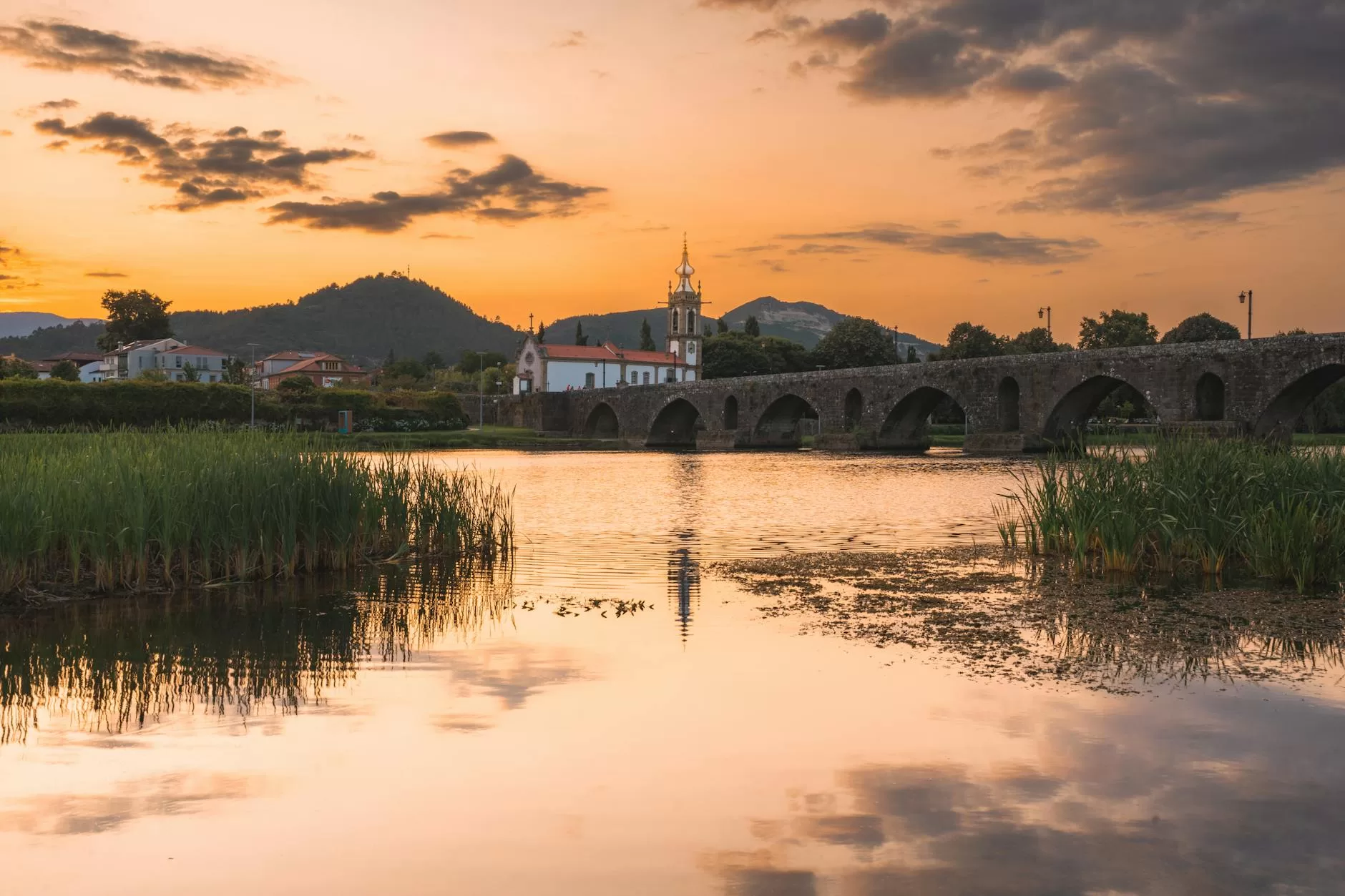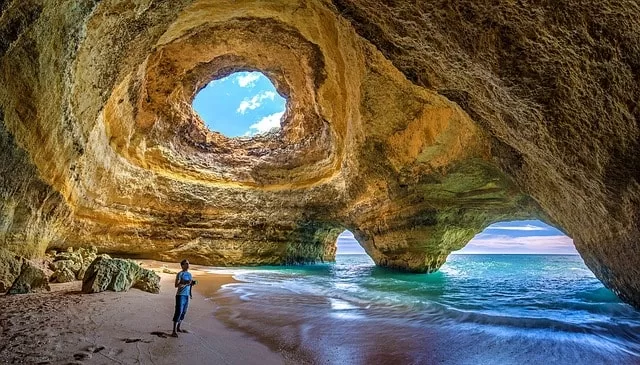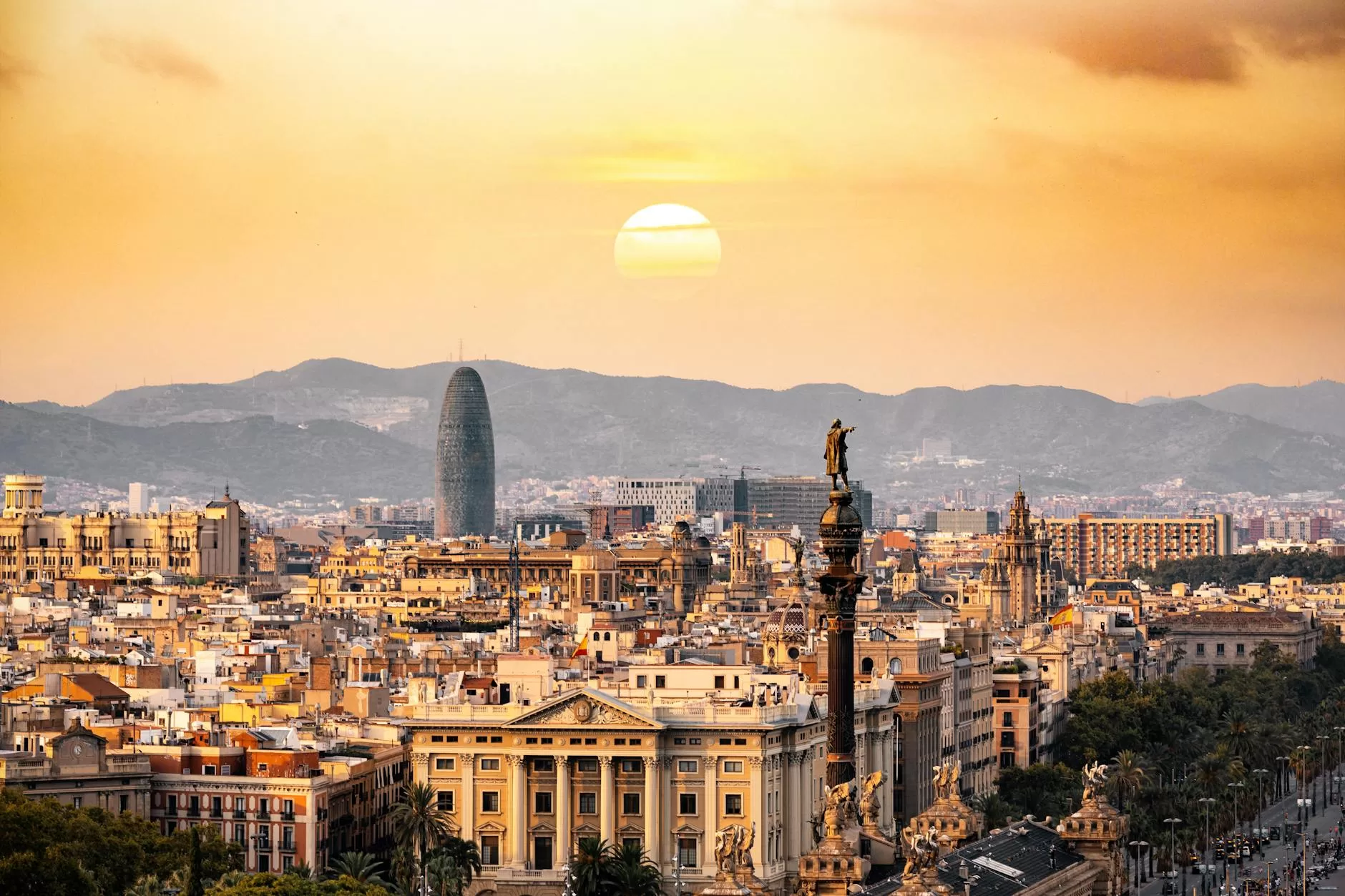Traveling through Portugal has been one of my favorite experiences. Planning a trip is always exciting yet slightly daunting. When I decided to explore Portugal, I wanted to experience everything. This incredible country has so much to offer. From its vibrant cities and charming villages to its stunning coastline and rich history that spans the entire country. But where to start? I’ve found that the key to a successful trip is careful planning that leaves room for spontaneity. Here’s how I went about planning my adventure in Portugal.
Visiting Portugal Itinerary
When planning your trip to Portugal, one of the first things to consider is the sheer diversity of experiences. What you can do in this relatively small country is amazing. From the vibrant city life in Lisbon and Porto to the tranquil beauty of the Douro Valley and the Algarve’s stunning beaches, there’s something for every type of traveler. When I started mapping out my itinerary, I realized that it’s essential to balance urban exploration, cultural immersion, and time to relax in nature. Whether you’re into history, food, or just soaking up the sun, ensure your itinerary reflects what excites you the most.
When to Explore Portugal?
Another key consideration is the time of year you plan to visit. I found that visiting in the shoulder seasons, like late spring or early fall, offered the perfect mix of good weather and fewer crowds. It allowed me to enjoy popular spots like Sintra and the coastal towns without tourists overwhelming me. Plus, the prices for accommodations and flights were more reasonable. Depending on the regions you want to explore, consider the seasonal variations. Therefore, this might impact your experience—the bustling summer festivals or the quieter, cooler winter months.
Finally, don’t underestimate the importance of transportation in shaping your itinerary. Portugal’s public transportation is excellent in major cities and between key destinations. However, if you’re looking to explore off-the-beaten-path places like the remote villages renting a car might be your best bet. I found that having a mix of public transport and self-driving allowed me the flexibility at my own pace. Just be sure to research potential challenges, like toll roads and parking, so you can navigate your journey smoothly.
Planning Your Trip to Portugal

When planning my adventure through Portugal, I quickly realized that timing was everything. The best time to visit this stunning country is spring or fall. Imagine waking up to mild, sunny weather, perfect for exploring everything from vibrant cities to serene beaches. Spring and fall also mean fewer tourists. Which allows for a more intimate experience. Let’s not forget those lower prices.
Portugal has diverse landscapes, and each region offers something unique. In the north, I was captivated by lush green landscapes and quaint, picturesque villages that seemed straight out of a storybook. The central region, with its rolling hills and the famous Douro Valley, was a wine lover’s paradise. And then there’s the Algarve in the south, where the warm weather and stunning beaches had me feeling like I’d stepped into a postcard.
If you’re anything like me and prefer a quieter and prefer more peaceful experience. Then consider seasons of April-May or September-October are your golden tickets. The weather is still beautiful but without the crowds of summer tourists.
How Long to Spend in Portugal
Deciding how long to spend in Portugal was a challenge, simply because there’s so much to see and do. In my experience, ten days was just enough to cover the mainland without feeling too rushed. However, if you’re short on time, a week isn’t reasonably sufficient to fully appreciate all that Portugal has to offer.
For a more relaxed pace and the chance to explore the mainland and the islands, consider spending at least two weeks. That way, you can soak in the culture, enjoy the scenery, and indulge in spontaneity.
A month was ideal for exploring Portugal’s wonders. This allowed me to explore the mainland in-depth and visit the enchanting Azores and Madeira islands. And trust me, each of these islands is a world unto itself.
When planning your itinerary, I recommend spending at least 3-4 days in the two major cities, Lisbon and Porto. These cities are rich in history, culture, and culinary delights, and you won’t want to rush through them.
Getting to Portugal

Arriving at Lisbon Airport and Other Entry Points
Arriving in Portugal was a breeze. Lisbon Airport, Portugal’s capital, is the main entry point for most international flights, and from the moment I stepped off the plane, the country’s warm hospitality welcomed me. However, Lisbon isn’t your only option. Other major airports like Porto, Faro, and Funchal (in Madeira) are well-connected and convenient, depending on where your journey begins.
The Porto airport is nice. I’ve flown in and out of it too but prefer the Lisbon airport when I must fly. When you buy tickets, consider the cost of convenience when picking which airport.
One thing I quickly learned is that getting from the airport to your accommodation can be tricky if you’re not prepared. I recommend researching your options beforehand. Whether you rent a car or book a transfer service, having a plan will save you from unnecessary stress.
Getting Around Portugal
Transportation in Portugal is a dream for any traveler. The public transportation system is efficient, comfortable, and reliable, making it easy to navigate the country. Railway stations connect to various metro lines and serve as integral transit points for locals and tourists. I used the extensive bus and train networks, which connect even the more remote areas.
Transportation Tips
The high-speed trains, in particular, were a highlight of my trip. The high-speed train connects the major cities, including Lisbon and Porto, and offers a smooth, scenic ride perfect for sitting back and soaking in the views.
However, there are also cheaper regional trains. The regional train will get you to central Portugal and some nearby beach resorts in a cost-effective manner. Buying train tickets in advance on the CP app can help you save some money.
Also, you can take a bus to the bus stations in each of these towns.
For those who prefer the freedom of the open road, rental cars are readily available from major agencies. Just be aware of toll roads and parking options, which can be a bit of a hassle in some areas. Bus services, though frequent and affordable, might not cover every rural nook and cranny, so a car could be helpful if you’re planning to explore off the beaten path. However, consider you will be driving down narrow cobblestone streets in Western Europe.
One of my top tips? Invest in a rechargeable transportation card. It’s convenient, saves time, and can be used across different modes of public transport.
Should You Rent a Car in Portugal?

When planning a trip to Portugal, renting a car can significantly impact your experience. Particularly if you’re heading to the Algarve. Based on my adventures, I’d highly recommend renting a car to explore this stunning region. The freedom it provides is unbeatable, allowing you to venture off the beaten path. Therefore, you can discover hidden gems—secluded beaches, charming villages, and scenic viewpoints often challenging to reach by public transportation. Having a car meant I could explore far more of the Algarve than without one.
Both international and local rental agencies are available in towns and airports. They offer a range of pricing and service features to suit various needs.
That said, if you prefer a more laid-back experience or if driving in unfamiliar places stresses you out, it’s entirely possible to enjoy the Algarve without a car. You’ll need to stick closer to the more accessible beaches and towns well-connected by public transportation.
Should you rent a car in Lisbon or Porto?
However, regarding Lisbon and Porto, my advice is clear: skip the rental car. In these bustling cities, a car is more of a hassle than a help. Explore Lisbon via the metro and city buses. The bus network is great here. Traffic can be chaotic. Parking is scarce and expensive, and public transportation is excellent, so you don’t need a car. Instead, plan on renting a car once you reach the Algarve and return it when you’re done exploring that region. This approach will save you money on gas, rental fees, and tolls, making your trip much smoother overall.
For my trip, I rented a car through Gueirin, for my car rentals. I’d recommend sticking with well-known international car rental companies like Europcar, Hertz, or Avis. Unfortunately, some of the smaller regional companies in Portugal are notorious for hidden fees. These extra charges can quickly turn a good deal into a financial headache.
Tips for Renting a Car in Portugal
Renting a car in Portugal, especially for the Algarve, is a great choice. However, there are a few things you should keep in mind to make the process smoother and more cost-effective.
One-Way Fees: If you’re picking up your rental car in one location and dropping it off in another, be aware that you’ll likely incur a “one-way” fee. This fee can vary depending on the distance between the two locations.
Airport Surcharge: Picking up or dropping off your rental car at an airport, such as Lisbon Airport or Faro Airport, often includes an additional surcharge. Typically it will cost around 30 Euros. While you could avoid this fee by renting your car in a city like Lagos, if you’re arriving directly at Faro Airport, it’s usually more convenient to pay the fee and get on your way.
Toll Roads: Portugal has an extensive network of toll roads, particularly on major highways like the A2 (between Lisbon and the Algarve) and the A22 (between Lagos and Faro). The easiest way to handle toll payments is to ask your rental car company to activate their electronic transponder. This will automatically charge you for any tolls you incur, saving you the hassle of figuring out payment systems on the road.
In summary, renting a car in Portugal can enhance your trip by allowing you to explore at your own pace. Just be mindful of the additional fees and plan accordingly to ensure a smooth and enjoyable experience.
Accommodation and Budgeting

Portugal has accommodations for every type of traveler. During my trip, I stayed in various places, from budget-friendly hostels to luxurious hotels, and each had its charm.
If you plan to explore a particular region, I suggest basing yourself in a major town or city. This way, you’ll have easy access to public transportation, which is a huge plus if you don’t have a car.
One of my favorite stays was in a hotel that offered a view of a UNESCO World Heritage Site. Waking up to such a view every morning was nothing short of magical.
I can’t stress enough the importance of booking your accommodation in advance, especially during peak season. Not only will it give you peace of mind, but it might also save you some money.
Budgeting for Your Trip
Portugal is a budget-friendly destination, but like any trip, costs can add up if you’re not careful. Prices varied significantly depending on the region, with the Algarve and major cities being more expensive.
To keep costs down, I budgeted extra for transportation, food, and activities. Researching and booking accommodations, transportation, and activities in advance was a lifesaver. It also allowed me to take advantage of any early-bird deals.
Free walking tours were a great way to get acquainted with the cities, and public transportation helped me save on getting around. These small savings added up and allowed me to splurge on unique experiences like wine tasting in the Douro Valley or a guided tour of the historic neighborhoods in Lisbon.
Exploring Portugal

Discovering Portugal’s Major Cities
No trip to Portugal is complete without visiting its two large cities: Lisbon and Porto. Each city has its distinct vibe and is steeped in history and culture.
In Lisbon, I spent my days wandering through historic neighborhoods like Alfama and Bairro Alto, where every street seemed to tell a story. The Belem Tower was a must-see, and the views from the top were simply breathtaking.
Porto, on the other hand, felt like stepping back in time. The Porto Cathedral and the Ribeira district, with its colorful buildings lining the Douro River, were highlights of my visit. And, of course, I couldn’t leave without trying the famous Port wine in one of the local cellars.
Both cities also have vibrant markets where I sampled traditional food and drinks. From freshly baked pastéis de nata in Lisbon to a hearty francesinha sandwich in Porto, my taste buds were on a constant adventure.
If you want to learn more about these cities’ rich histories, I recommend taking a guided tour. These tours often take you off the beaten path, revealing hidden gems and local secrets you might otherwise miss.
Exploring Portugal’s Regions
One of the things I loved most about Portugal was the diversity of its regions. Each area has its unique charm and is worth exploring in its own right.
Major towns like Lisbon, Porto, and Faro offer convenient car rental services, making it easy for travelers to explore the country and access popular tourist destinations beyond the cities.
In the north, I was enchanted by the lush green landscapes and picturesque villages. It was here that I found a slower pace of life, where I could take my time exploring and savoring every moment.
The central region is a haven for wine lovers.
Experiencing Portugal’s Culture and Nature

Immersing Yourself in Portuguese Culture
One of the best ways to truly experience Portugal is to immerse yourself in its rich culture. During my travels, I had the chance to attend a local festival, where I experienced traditional music and dance firsthand. The energy, the colors, the sounds—it was an unforgettable experience.
Another highlight of my trip was trying traditional food and drinks. From fresh seafood to the famous Port wine, every meal was a new adventure. I also made a point to explore local markets and shops, where I found unique souvenirs to bring back home.
If you want to learn more about Portuguese cuisine, I highly recommend taking a cooking class or a wine-tasting tour. These hands-on experiences are not only fun but also give you a deeper appreciation of the local culture.
Exploring Portugal’s Natural Beauty

Portugal is a country of incredible natural beauty, and I explored as much of it as possible. The Douro Valley, with its rolling hills and vineyards, was a highlight of my trip. I spent my days hiking through the valley, taking in the stunning landscapes, and learning about the region’s rich history of wine production.
For outdoor enthusiasts, the Serra da Estrela Natural Park is a must-visit. With its rugged mountains and diverse wildlife, it’s the perfect spot for hiking and other outdoor activities.
And if you’re looking for something unique, consider visiting the Azores and Madeira. These islands are home to some of the most diverse landscapes I’ve ever seen, from lush forests to volcanic craters. Whether hiking through the mountains or taking a boat tour to discover hidden beaches, there’s no shortage of natural wonders to explore.
Discovering Portugal’s UNESCO World Heritage Site

Portugal is a country brimming with history, culture, and breathtaking landscapes, and its UNESCO World Heritage Sites are a testament to this rich heritage. From ancient monasteries and historic city centers to unique cultural landscapes, these sites offer a fascinating glimpse into Portugal’s past and present. Whether you’re a history buff, an architecture enthusiast, or a curious traveler, visiting these World Heritage Sites is a must. Here’s a guide to some of the most remarkable sites you should explore during your journey through Portugal.
1. The Tower of Belém and the Jerónimos Monastery (Lisbon)
Location: Lisbon

Lisbon’s Belém district is home to two of Portugal’s most iconic World Heritage Sites: the Tower of Belém and the Jerónimos Monastery. The Tower of Belém, a stunning example of Manueline architecture, was built in the early 16th century to guard the entrance to the Tagus River. This fortress played a crucial role in the Age of Discoveries, and its intricate stonework and strategic position make it a must-see.
Just a short walk away, you’ll find the Jerónimos Monastery, another masterpiece of Manueline architecture. King Manuel commissioned the monastery I to commemorate Vasco da Gama’s successful voyage to India. The elaborate cloisters, ornate carvings, and stunning church interior reflect Portugal’s golden age of exploration. Visiting these two sites offers a deep dive into Portugal’s maritime history and architectural brilliance.
2. Historic Centre of Porto
Location: Porto

The Historic Centre of Porto, also known as Ribeira, is a vibrant and picturesque area that perfectly captures the spirit of this northern city. Porto is characterized by its narrow, winding streets, colorful houses, and the stunning Dom Luís I Bridge that spans the Douro River. Porto’s historic center is a blend of medieval and modern influences, with landmarks such as the Porto Cathedral, the Church of São Francisco, and the iconic Livraria Lello, often considered one of the most beautiful bookstores in the world.
As you wander through the historic streets, you’ll encounter traditional markets, cozy cafes, and wine cellars where you can taste the world-famous Port wine. The atmosphere in Ribeira is lively and nostalgic, making it a perfect spot to soak in the culture and history of Porto.
3. Sintra Cultural Landscape
Location: Sintra

Sintra, nestled in the hills near Lisbon, is a fairytale-like destination that has enchanted visitors for centuries. The Sintra Cultural Landscape is renowned for its stunning palaces, lush gardens, and romantic architecture. The most famous is the Palácio da Pena, a colorful and eclectic palace atop a hill, offering panoramic views of the surrounding landscape.
Another must-visit site is the Quinta da Regaleira, a mysterious estate with a Gothic-style palace, enchanting gardens, and underground tunnels. The Sintra National Palace, with its distinctive twin chimneys, is the oldest in Sintra and showcases a blend of Moorish and Manueline architecture. Exploring Sintra feels like stepping into a storybook, where each turn reveals a new architectural wonder or scenic vista.
4. Monastery of Batalha
Location: Batalha

The Monastery of Batalha, or the Monastery of Saint Mary of the Victory, is a striking example of Gothic architecture with Manueline influences. Built to commemorate Portugal’s victory over Castile at the Battle of Aljubarrota in 1385, this monastery symbolizes national pride. Its construction took over a century, resulting in an architectural masterpiece that includes the grand nave, the intricate Unfinished Chapels (Capelas Imperfeitas), and the stunning cloisters.
The Monastery of Batalha is not just an architectural marvel; it’s also a significant historical site, housing the tomb of King João I and his wife, Philippa of Lancaster. The monastery’s grandeur and historical importance make it one of the most impressive UNESCO World Heritage Sites in Portugal.
5. Convent of Christ in Tomar
Location: Tomar

The Convent of Christ in Tomar is a fascinating blend of architectural styles, reflecting its long and storied history. Originally built as a Templar stronghold in the 12th century, the convent later became the headquarters of the Order of Christ. The site is renowned for its stunning Manueline window, an intricate piece of stonework considered one of the finest examples of this unique architectural style.
As you explore the convent, you’ll discover Romanesque, Gothic, Renaissance, and Baroque elements, all contributing to its unique charm. The convent’s labyrinthine layout, cloisters, church, and fortress-like walls, offers a glimpse into Portugal’s medieval past. The Convent of Christ is where history and legend intertwine, making it a captivating site to visit.
6. Douro Valley
Location: Douro Valley

The Douro Valley is one of the most beautiful wine regions in the world. The valley’s terraced vineyards, cultivated for over 2,000 years, stretch along the Douro River, creating a breathtaking landscape. This region is the birthplace of Port wine and offers a chance to explore its rich viticultural heritage.
You can take a scenic drive through the valley, visit traditional wine estates (quintas), and enjoy wine tastings with stunning views. A boat cruise along the Douro River is another excellent way to enjoy the scenery and appreciate the region’s beauty. This Valley is not just a feast for the eyes but also a delight for the palate, making it a must-visit destination for wine lovers and nature enthusiasts alike.
7. University of Coimbra – Alta and Sofia
Location: Coimbra

The University of Coimbra, founded in 1290, is one of the oldest universities in Europe and a symbol of Portugal’s intellectual history. The university complex, including its historic buildings and libraries, is a World Heritage Site. The Joanina Library, with its stunning baroque interior and a vast collection of ancient books, is a highlight of any visit.
The university also includes the Royal Palace of Alcáçova, which houses its administrative offices, and the Chapel of São Miguel, known for its beautiful azulejos (ceramic tiles) and organ. The university’s rich history and academic traditions make it a fascinating place to explore. The city of Coimbra itself, with its steep hills and medieval streets, adds to the charm of this historic site.
8. Madeira Laurisilva
Location: Madeira Island

Madeira Laurisilva is a natural heritage site representing the largest surviving area of laurel forest (Laurisilva) in the world. This ancient forest, which once covered much of Southern Europe, is now primarily found in Madeira. The forest is home to a unique ecosystem, with endemic plant and animal species that thrive in its lush, humid environment.
Exploring the Laurisilva of Madeira is like stepping into a prehistoric world with its dense vegetation, misty atmosphere, and towering trees. The forest offers numerous hiking trails through this verdant landscape, offering stunning views and the chance to experience the island’s natural beauty. For nature lovers and outdoor enthusiasts, the Madeira Laurisilva is a must-visit destination.
Portugal UNESCO World Heritage Sites
Portugal’s UNESCO World Heritage Sites are more than just places of interest; they are windows into the country’s soul. Each site tells a story of Portugal’s past, whether through the grandeur of a monastery, the charm of a historic city center, or the untouched beauty of a natural landscape. As you travel through Portugal, taking the time to visit these sites will enrich your understanding of the country and its people. These heritage sites are the perfect blend of history, culture, and natural beauty, making your journey through Portugal an unforgettable experience. Safe travels as you explore these remarkable treasures!
Exploring Northern Portugal

Northern Portugal is a region of contrast and allure, from its lush green landscapes and dramatic coastlines to its vibrant cities and ancient traditions. This part of the country offers a unique blend of natural beauty and cultural heritage, making it an ideal destination for those seeking adventure and authenticity. Here’s a brief guide to exploring the northern part of Portugal, where every corner reveals a new story, and every experience is a dive into the heart of Portuguese culture.
1. Porto: Portugal’s Cultural Capital

Porto, Portugal’s second-largest city. These Portuguese cities are known for their vibrant metropolis. Which is known for its rich history, stunning architecture, and world-famous port wine. It’s a perfect starting point for exploring Portugal.
What to Do: Wander through the historic Ribeira district, with its narrow streets, colorful houses, and picturesque riverfront. Visit the iconic Livraria Lello, one of the world’s most beautiful bookstores, and marvel at its ornate interior. Don’t miss the chance to tour one of Porto’s port wine cellars in Vila Nova de Gaia, where you can sample some of the finest wines Portugal has to offer.
Local Tip: For a unique city perspective, take a boat tour along the Douro River. The views of Porto’s skyline and the six bridges spanning the river are breathtaking, especially at sunset.
2. Braga: The Religious Heart of Portugal

Known as the “Rome of Portugal,” Braga is a city steeped in religious history and architecture. It’s where ancient churches and sanctuaries abound, offering a glimpse into Portugal’s spiritual past.
What to Do: Visit the Sanctuary of Bom Jesus do Monte, a stunning baroque church set on a hilltop with a remarkable stairway that leads up to it. Explore the Braga Cathedral, one of the oldest in Portugal, and stroll through the charming city center with its lively squares and historic buildings.
Local Tip: Try the local specialty, Bacalhau à Braga, a salted cod dish cooked with potatoes, onions, and garlic. It’s a traditional meal that reflects the city’s deep culinary roots.
3. Guimarães: The Birthplace of Portugal

Guimarães, often referred to as the “cradle of Portugal,” is a historic city with well-preserved medieval architecture and a significant place in the country’s history. It’s a World Heritage Site and a treasure trove of Portuguese heritage.
What to Do: Explore the historic center, where you can visit the Guimarães Castle, a medieval fortress that played a crucial role in the formation of Portugal. Wander through the beautiful Largo da Oliveira and the charming streets of the old town, filled with traditional houses and lively cafés.
Local Tip: Don’t miss the opportunity to try the local dish, Feijoada à Transmontana, a hearty bean stew with pork and sausages, often enjoyed in the colder months.
4. Douro Valley: A Scenic Wine Region

The area is one of the most scenic regions in Portugal, famous for its terraced vineyards and picturesque landscapes. It’s also the heartland of port wine production.
What to Do: Take a scenic drive or river cruise through the valley to soak in the breathtaking views of rolling hills and terraced vineyards. Visit one of the local wine estates for a tour and tasting session, where you can sample some of the region’s world-renowned port wines and learn about the winemaking process.
Local Tip: If you’re into outdoor activities, consider hiking the Douro International Natural Park or exploring the traditional village of Pinhão, known for its beautiful train station covered in azulejos (traditional Portuguese tiles).
5. Viana do Castelo: A Coastal Gem

Situated on the Atlantic coast, Viana do Castelo is a charming city with a rich maritime heritage and stunning coastal scenery. It’s a great place to experience the blend of sea and culture.
What to Do: Visit the Basilica of Santa Luzia, perched on a hill overlooking the city, which offers panoramic views of the coastline and surrounding area. Explore the historic center, with its beautiful squares, traditional shops, and seafood restaurants. Don’t miss a stroll along the beach or a visit to the nearby Praia de Cabedelo for a relaxing day by the sea.
Local Tip: Try the local seafood dishes, especially the fresh seafood rice (arroz de marisco) or the grilled sardines, which are a regional specialty.
6. Serra do Gerês: Portugal’s Natural Wonderland

The Serra do Gerês is Portugal’s only national park and offers natural beauty and outdoor adventures. It’s a rugged landscape of mountains, rivers, and forests, perfect for nature enthusiasts.
What to Do: Explore the park’s hiking trails, which lead to stunning viewpoints, waterfalls, and ancient Roman ruins. The park also has various wildlife, including deer and wild boar. Visit the picturesque village of Gerês, a great base for exploring the surrounding nature.
Local Tip: For a unique experience, visit the traditional villages within the park, such as Lindoso, where you can see ancient granaries (espigueiros) and learn about local customs and traditions.
7. Valença: A Tranquil Riverside Town

Nestled near the Spanish border, Valença is a picturesque town perched along the banks of the Minho River. This tranquil gem is celebrated for its scenic riverfront, captivating historic architecture, and its charmingly laid-back vibe.
What to do: Wander through the impressive fortified walls for stunning views of the river and surrounding area. Stroll the Riverside Promenade: Enjoy a peaceful walk along the riverfront, soaking in the serene beauty. Visit Igreja de Santa Maria dos Anjos: Admire the intricate architecture and tranquil atmosphere of this historic church. Wander the Old Town: Discover narrow streets and traditional buildings in Valença’s historic center. Boat Trip on the Minho River: Take a leisurely boat tour to appreciate the area differently. Relax at Praia de Moledo: Enjoy swimming or sunbathing at this nearby beach.
Local Tip: Don’t miss the chance to indulge in regional sweet treats, especially the “tarte de amêndoa” (almond tart). This delicious pastry is a local favorite and provides a perfect taste of Valença’s culinary delights.
8. Ponte de Lima: Portugal’s Oldest Town

Ponte de Lima is a historic town with a rich heritage and a picturesque setting along the Lima River. It’s known for its ancient architecture, charming streets, and annual festivals.
What to Do: Visit the Ponte de Lima Bridge, a Roman bridge that is one of the town’s most famous landmarks. Explore the historic center, with its quaint squares, traditional shops, and the beautiful Igreja de Santo António.
Local Tip: If you’re visiting in August, don’t miss the Festa da Senhora das Dores, a traditional festival with music, dancing, and local food.
Northern Portugal Itinerary
The northern regions are where natural beauty and cultural richness come together in a captivating blend. Whether you’re exploring the vibrant city of Porto, soaking in the history of Guimarães, or trekking through the rugged landscapes of the Douro Valley and Serra do Gerês, this part of the country offers a wealth of experiences that go beyond the typical tourist trail. Embrace the region’s diversity, from its historic towns and scenic landscapes to its delicious cuisine and warm hospitality. Each destination in Portugal invites you to delve deeper and discover the unique stories and traditions that make this part of Portugal truly special.
Best Food in Portugal Itinerary

Portugal is a food lover’s paradise, offering a rich tapestry of flavors, textures, and culinary traditions that reflect the country’s diverse regions and history. From fresh seafood along the coast to hearty meats and cheeses in the mountains, Portugal’s cuisine is as varied as its landscapes. Here’s a guide to some of the best places to eat in Portugal, where you can savor everything from Michelin-starred dishes to traditional fare in charming local taverns.
1. Lisbon: A Gastronomic Hub
Lisbon, the vibrant capital of Portugal, is a hotspot for culinary innovation while staying true to its traditional roots. Here are some must-visit spots:
Belcanto (Chiado): Chef José Avillez’s two-Michelin-starred restaurant, Belcanto, is a must-visit for those seeking a high-end dining experience. The restaurant offers modern interpretations of Portuguese classics, such as suckling pig and codfish, in an elegant setting. The tasting menu is a culinary journey that showcases the best of Portuguese flavors with a contemporary twist.
Time Out Market (Cais do Sodré): For a more casual yet diverse experience, head to the Time Out Market. This food hall gathers some of the best chefs and food vendors in Lisbon under one roof. You can sample a wide range of dishes, from gourmet seafood to traditional Portuguese pastries, all in one place.
Taberna da Rua das Flores (Chiado): This cozy and unpretentious tavern is perfect for those looking to experience authentic Portuguese cuisine. The menu changes daily, based on what’s fresh and in season, but you can expect dishes like petiscos (Portuguese tapas), fresh fish, and hearty stews.
Ramiro (Intendente): If you’re a seafood lover, Ramiro is the place to be. This bustling seafood restaurant is famous for its fresh shellfish, particularly the giant tiger prawns and grilled clams. It’s a no-frills place where the focus is purely on the quality of the seafood.
2. Porto: A Blend of Tradition and Innovation
Porto, known for its rich history and stunning views along the Douro River, also offers a culinary scene that is both traditional and cutting-edge.
The Yeatman (Vila Nova de Gaia): The Yeatman is a luxury hotel with a two-Michelin-starred restaurant that offers breathtaking views of Porto’s skyline. Chef Ricardo Costa’s menu celebrates Portuguese cuisine, emphasizing local ingredients and traditional flavors presented with modern flair. The wine list is extensive, focusing on the best Portuguese wines, particularly Port.
Casa de Chá da Boa Nova (Leça da Palmeira): Located in a stunning setting on the Atlantic coast, this Michelin-starred restaurant, led by Chef Rui Paula, offers a unique dining experience where the food is as beautiful as the surroundings. The menu is seafood-centric, with dishes that highlight the flavors of the sea in creative and sophisticated ways.
Café Santiago (Santo Ildefonso): No trip to Porto is complete without trying a Francesinha, a hearty sandwich that is a local specialty. Café Santiago is one of the best places to try this dish, which is made with layers of meat, covered in melted cheese, and smothered in a rich tomato and beer sauce. It’s comfort food at its best.
DOP (Ribeira): Chef Rui Paula’s DOP is a stylish restaurant in the heart of Porto that offers modern interpretations of traditional Portuguese dishes. The seasonal menu emphasizes fresh, local ingredients, and the wine list is carefully curated to complement the dishes.
3. The Algarve: A Coastal Culinary Haven
The Algarve, known for its stunning beaches and sunny weather, is also a fantastic destination for foodies, particularly those who love fresh seafood.
Vila Joya (Albufeira): Vila Joya is a two-Michelin-starred restaurant in a luxurious cliffside hotel with stunning views of the Atlantic Ocean. The restaurant offers a fine dining experience with a tasting menu that changes daily, featuring the freshest local ingredients. The cuisine is a blend of Mediterranean and Portuguese flavors, emphasizing seafood.
Rei das Praias (Ferragudo): This beachfront restaurant has been serving up some of the best seafood in the Algarve for over 40 years. It’s the perfect spot for a leisurely lunch by the sea, with dishes like grilled fish, clams, and octopus salad. The atmosphere is relaxed, and the views are unbeatable.
O Barradas (Silves): Located inland, away from the bustling tourist areas, O Barradas offers traditional Algarvean cuisine. The menu focuses on locally sourced ingredients, including organic vegetables, free-range meats, and freshly caught fish. The wine list features some excellent regional wines, making it a great place to enjoy a quiet, authentic meal.
A Ver Tavira (Tavira): This charming restaurant in the picturesque town of Tavira offers a modern take on Algarvean cuisine. The seasonal menu highlights the best local ingredients, such as freshly caught fish, octopus, and locally grown produce. The restaurant’s terrace offers beautiful town views, making it a fantastic spot for a romantic dinner.
4. The Alentejo: A Feast for the Senses
The Alentejo region, known for its rolling plains and medieval towns, is a treasure trove of hearty, rustic cuisine.
Herdade do Esporão (Reguengos de Monsaraz): Located in one of Portugal’s most famous wine estates, Herdade do Esporão offers a farm-to-table dining experience that celebrates the flavors of the Alentejo. The restaurant’s seasonal menu focuses on local, organic produce, including vegetables grown on the estate and meats from nearby farms. The wine list is, of course, exceptional, featuring the estate’s wines.
Taberna Tia Jacinta (Portalegre): For a more rustic experience, head to Taberna Tia Jacinta, a traditional Alentejo tavern where you can enjoy hearty dishes like migas (a dish made with leftover bread, garlic, and pork), black pork, and game meats. The atmosphere is warm and welcoming, and the food is cooked with love.
Vinho e Noz (Évora): This small, family-run restaurant in the historic town of Évora offers a cozy atmosphere and a menu full of traditional Alentejo dishes. The lamb stew, black pork, and codfish are particularly good, and the wine list includes some excellent local options. It’s a great place to experience the hearty, flavorful cuisine of the region.
Adega Vila Lisa (Alvor): In the heart of Alentejo, this restaurant offers an authentic taste of the region with dishes like açorda (a bread-based stew), ensopado de borrego (lamb stew), and various grilled meats. The setting is rustic, and the food is prepared according to traditional methods, making it a favorite among locals and visitors.
5. Madeira: A Taste of the Islands
Madeira, known for its dramatic landscapes and lush vegetation, has a unique culinary tradition influenced by its island location.
Il Gallo d’Oro (Funchal): This two-Michelin-starred restaurant, located in the Cliff Bay Hotel, is the epitome of fine dining in Madeira. Chef Benoît Sinthon creates exquisite dishes that blend Mediterranean and Portuguese flavors with a focus on fresh, local ingredients.
Armazém do Sal (Funchal): Housed in a former salt warehouse, Armazém do Sal offers a unique dining experience in a historical setting. The menu features traditional Madeiran dishes with a modern twist, such as espada (scabbardfish) with banana and passionfruit sauce and regional espetada (beef skewers). The atmosphere is relaxed, and the service is impeccable.
Restaurante do Forte (Funchal): Located within the historic walls of the São Tiago Fortress, this restaurant offers a memorable dining experience with stunning views over the ocean. The menu mixes traditional Madeiran and contemporary cuisine, including grilled limpets, octopus salad, and Madeira wine-marinated beef. The setting is romantic, making it an excellent choice for a special night out.
Casa Velha do Palheiro (Funchal): This elegant restaurant, part of the Relais & Châteaux hotel, offers a fine dining experience in a beautiful, historic setting. The menu focuses on regional specialties with a modern touch, using ingredients sourced from the estate’s gardens and local markets. The wine list is extensive, with a strong emphasis on Madeira wines.
Portugal Culinary Scene
Portugal’s culinary scene is as diverse and exciting as its landscapes. It offers everything from traditional dishes steeped in history to cutting-edge cuisine that pushes the boundaries of flavor and presentation. Whether dining in a Michelin-starred restaurant in Lisbon, enjoying a rustic meal in the Alentejo or savoring fresh seafood by the coast in the Algarve, each meal in Portugal tells a story of the country’s rich culinary heritage. So, come with an open mind and an empty stomach. Therefore, let Portugal’s food scene take you on a journey you’ll never forget. Safe travels, and bon appétit!
Safety and Practical Information

Staying Safe and Healthy in Portugal
Safety is always a top priority when traveling, and I found Portugal to be a very safe country. That being said, it’s important to take standard precautions to protect yourself and your belongings. Especially in tourist areas where pickpocketing and petty theft can occur.
I also recommend purchasing travel insurance to cover unexpected medical or travel-related expenses. It’s always better to be safe than sorry, and having insurance gave me peace of mind throughout my trip.
Before you go, it’s also a good idea to research and stay informed about local conditions and events. This will help you avoid potential issues and ensure a smooth and enjoyable trip.
Guided Tours and Itineraries
If you want to make the most of your time in Portugal, consider taking a guided tour. These tours are a great way to discover hidden gems and local secrets you might miss.
When choosing a tour, it’s essential to research and book with a reputable company that suits your interests and budget. Look for tours that include transportation, accommodation, and activities, as this can save you time and money.
If you prefer a more personalized experience, consider customizing your tour to fit your interests and schedule. Whether you’re interested in history, culture, nature, or food, there’s a tour out there that’s perfect for you.
Atypical Last Thoughts

Traveling through Portugal was one of the most enriching experiences of my life. From the vibrant cities and historic landmarks to the stunning natural landscapes and rich culture, there’s something for every traveler in this beautiful country. Whether planning a short trip or a more extended adventure, I hope this guide helps you make the most of your time in Portugal. Remember, the best journeys are where you take your time, savor every moment, and leave room for spontaneity. Happy travels, adventurers!
If you are contemplating working in Portugal, consider this guide.
Subscribe
Are you an avid traveler seeking inspiration for your next adventure? Look no further than the Atypical Vagabonds newsletter. By subscribing to our newsletter, you gain access to a treasure trove of travel tips, destination guides, and captivating stories from around the globe. Our knowledge in exploring off-the-beaten-path destinations. We offer a refreshing perspective on travel, encouraging you to embrace the unconventional and discover unique experiences. Join the community today and let our wanderlust-inducing content inspire you. Therefore, you can embark on extraordinary journeys. Subscribe to receive their latest updates directly in your inbox and never miss a travel adventure again.
Donations
Love what you’re seeing on Atypical Vagabond? Help us keep the adventures coming! Consider donating through PayPal’s secure payment system. Every contribution goes a long way in fueling our mission to bring you more thrilling content and unforgettable experiences. Join us in shaping the future of travel—donate today!













You must be logged in to post a comment.